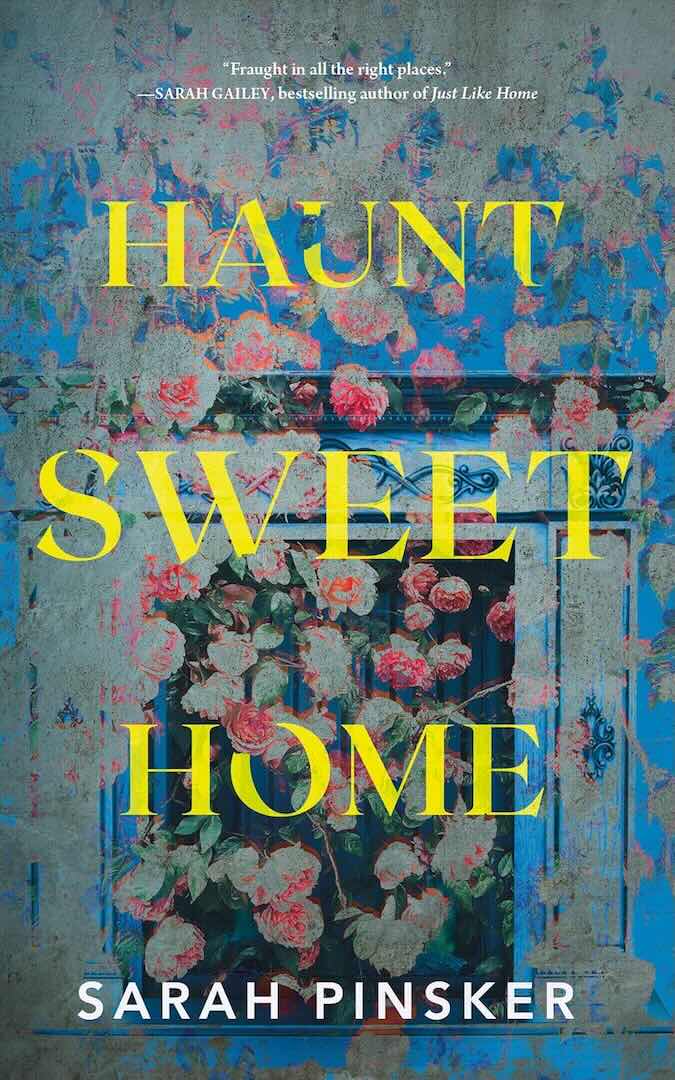Reality television has long capitalized on our fascination with the paranormal, but rarely has a story so deftly explored the blurred lines between staged scares and authentic hauntings, between performance and identity. Sarah Pinsker’s novella “Haunt Sweet Home” manages this delicate balance while delivering a poignant meditation on self-discovery and belonging.
Overview
In this atmospheric tale, we follow Mara, a directionless twenty-something who lands a job as a night-shift production assistant on her cousin Jeremy’s ghost-hunting home renovation show. As she masters the art of manufactured hauntings with fog machines and carefully timed sound effects, Mara encounters Jo, a mysterious coworker whose presence becomes increasingly unsettling—and inexplicably linked to Mara’s own journey of self-discovery.
Strengths
Atmospheric World-Building
Pinsker excels at creating rich, textured environments. The various haunted locations, from the ancient apple orchard to the two-story library, are vividly rendered. The author’s attention to sensory detail makes these spaces feel lived-in and authentic, while maintaining an undercurrent of otherworldliness.
Behind-the-Scenes Reality
The novella offers a fascinating glimpse into the mechanics of reality television production. The author’s detailed exploration of practical effects, crew dynamics, and the careful manipulation of homeowners’ expectations adds layers of authenticity to the narrative while serving as an effective metaphor for larger themes of performance and identity.
Character Development
Mara’s evolution from an uncertain PA to someone gradually finding her voice is skillfully handled. Her relationship with her family, particularly the complex dynamics around her grandmother’s carved chairs and her cousin Jeremy’s success, provides rich emotional depth to the story.
Areas for Improvement
Pacing Issues
The story’s momentum occasionally falters, particularly in the middle section. Some of the haunting sequences begin to feel repetitive, and the transition between Mara’s regular hauntings and her supernatural encounters could be more clearly delineated.
Character Relationships
While Jo is an intriguing character, her relationship with Mara sometimes feels underdeveloped. The revelation of Jo’s true nature, while compelling, might have benefited from more groundwork earlier in the narrative.
World-Building Questions
Some aspects of the supernatural rules remain unclear. The limitations and capabilities of Jo’s ghostly nature seem to shift according to plot requirements rather than following consistent internal logic.
Thematic Resonance
The novella’s exploration of identity, belonging, and artistic expression is particularly compelling. Through Mara’s woodcarving—a skill inherited from her grandmother—Pinsker creates a beautiful metaphor for the way we shape ourselves and are shaped by others.
Writing Style
Pinsker’s prose is clean and effective, with moments of genuine beauty, particularly in descriptions of woodworking and haunted spaces. The integration of reality show transcript formats adds variety to the narrative structure, though these segments occasionally interrupt the story’s flow.
Comparison to Other Works
Readers familiar with Pinsker’s previous works (“A Song for a New Day,” “We Are Satellites”) will recognize her talent for examining human connections through speculative scenarios. “Haunt Sweet Home” shares thematic DNA with stories like Grady Hendrix’s “The Southern Book Club’s Guide to Slaying Vampires” in its blend of supernatural elements with everyday life.
Target Audience
This novella will appeal to fans of:
- Character-driven supernatural fiction
- Behind-the-scenes entertainment industry stories
- Coming-of-age narratives with paranormal elements
- Reality TV enthusiasts
- Stories about family dynamics and identity
Final Verdict
“Haunt Sweet Home” is an ambitious novella that mostly succeeds in its goals. While it occasionally struggles with pacing and some underdeveloped elements, the core story of self-discovery and the creative integration of supernatural elements with reality TV mechanics makes for an engaging read.
Recommendation
Despite its flaws, “Haunt Sweet Home” offers a unique take on the ghost story genre while delivering thoughtful commentary on identity and performance. It’s recommended for readers who enjoy character-focused supernatural fiction and don’t mind some narrative ambiguity.
The Author’s Legacy
Sarah Pinsker has established herself as a skilled writer of speculative fiction, winning multiple Hugo and Nebula Awards. While “Haunt Sweet Home” may not reach the heights of her previous work, it demonstrates her continued ability to find fresh angles on familiar genres while maintaining focus on human connection and personal growth.
Impact and Relevance
In an era dominated by reality television and carefully curated social media presence, “Haunt Sweet Home” offers a timely examination of authenticity and performance. The story’s exploration of how we present ourselves to the world—and how that presentation affects our understanding of self—resonates strongly with contemporary concerns.
Notable Quotes
“For starters, you’re still sitting there, and you’re angry at me, and I scared you, but you’re not scared of me.”
“If I wanted to communicate with you, I’d just speak.”
Related Reading
Readers who enjoy “Haunt Sweet Home” might also appreciate:
- “Come Closer” by Sara Gran
- “The Sun Down Motel” by Simone St. James
- “The Ghost Network” by Catie Disabato
- “Bird Box” by Josh Malerman





